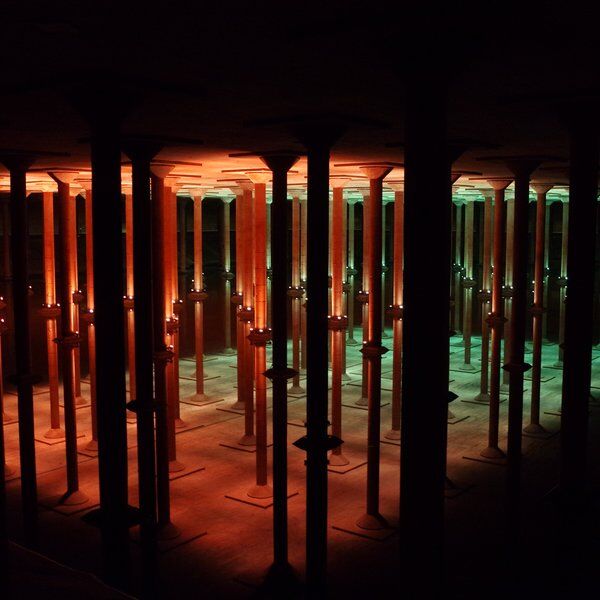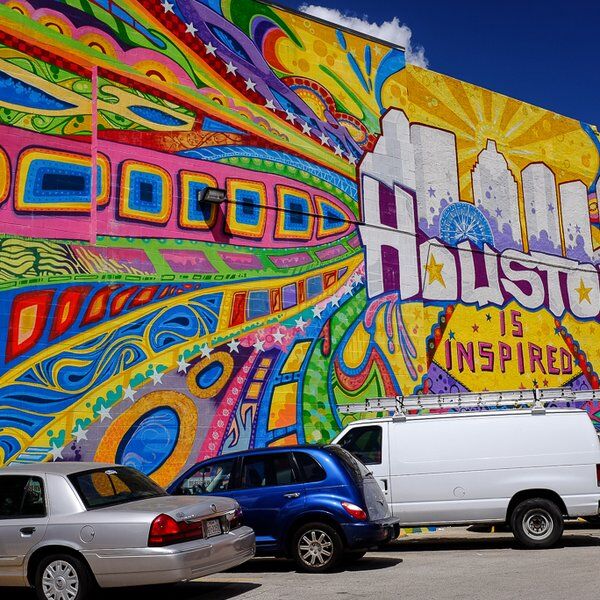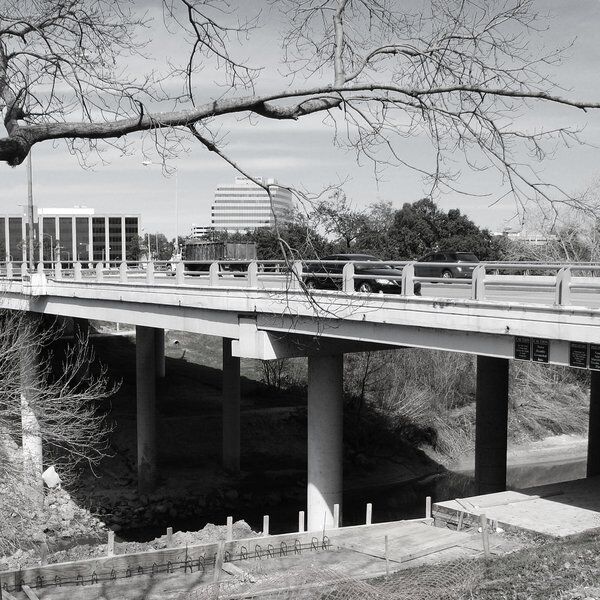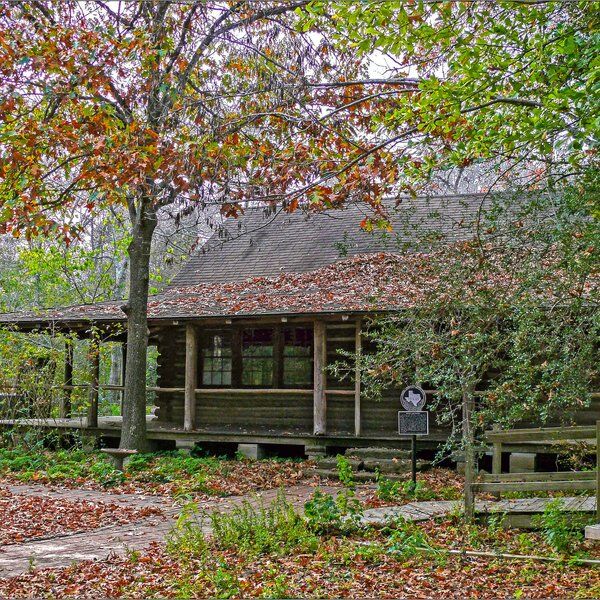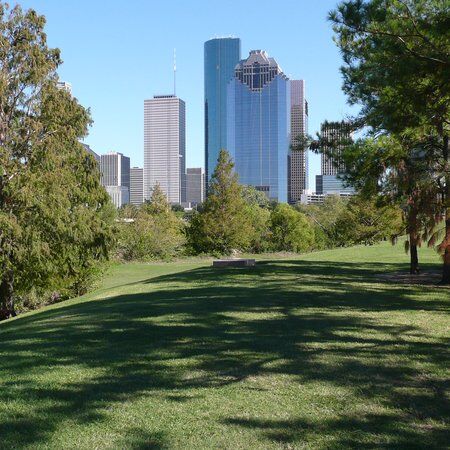
Discover Eleanor Tinsley Park
Eleanor Tinsley Park, part of the Buffalo Bayou Park in Houston, Texas, is spread uniquely across three ZIP codes—77002, 77007, and 77019. Bordered by Taft Street to the west, Sabine Street to the east, Memorial Drive to the north, and Allen Parkway to the south, the park's address can be challenging to pinpoint. Specific landmarks inside the park, like the San Felipe playground and the Lee and Joe Jamail Skatepark, even have their own distinct addresses. Despite this often confusing aspect of the park, it is a wonderful place to visit, providing some of the best views of the Houston Downtown Skyline, making it a favourite spot for photography, or simply one of the city’s romantic things to do.

Who was Eleanor Tinsley?
Early Life
Eleanor Whilden Tinsley was born on 31st October 1926, in Dallas, Texas, to W.C. Whilden and Georgiabel Burleson. She spent her childhood in Dallas and pursued higher education at the College of William and Mary before earning a bachelor's degree from Baylor University. In 1948, she married James Aubrey Tinsley and moved to Houston in 1953, where they raised their three children.
Early in her career, Eleanor Tinsley advocated for school integration, leading to her election to the Houston Independent School District (HISD) Board in 1969. By 1972, she had become the board president. This commitment to education and civil rights lasted her entire career. In 1979, Tinsley was elected to the Houston City Council, where she served until 1995.
Political Career
While Tinsley was in office the council passed progressive reforms, including indoor smoking bans, regulations on billboards, and bicycle helmet laws. She even played a role in establishing the city's 9-1-1 emergency system. Additionally, Tinsley worked with the Texas Council of Child Welfare Board, advocating for state-funded foster care and support for children in need. As an advocate for gay rights, Tinsley was instrumental in the election of Houston's first openly gay mayor, Annise Parker, in 2009.
Community Efforts
Beyond her political career, Tinsley was involved in community service, working with organisations such as Planned Parenthood and the Baptist General Convention of Texas. She founded the SPARK Park Program, which created over 200 playgrounds and parks in Houston—it's no wonder a park was dedicated to her memory.
Tinsley was mentioned in the Texas Women's Hall of Fame in 1988 and received numerous awards, including the Texas Institute for Research and Rehabilitation President Award for aiding persons with disabilities and the American Lung Institute of Texas' Public Advocacy Award. On 10th February 2009, Eleanor passed away from cancer yet her legacy endures through her initiatives and the spaces named in her honour.
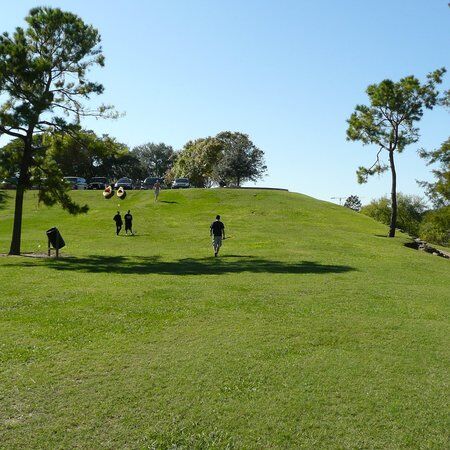
Naming Eleanor Tinsley Park
On 20th April 1998, the city of Houston honoured civic activist Eleanor Tinsley by naming part of the larger Buffalo Bayou Park, as Eleanor Tinsley Park. According to Anne Olson, president of the Buffalo Bayou Partnership, this section had never had its own distinct name until this moment. This designation helped to highlight Tinsley's contributions to the city and provided a dedicated space for community gatherings and outdoor activities.
Renovating Eleanor Tinsley Park
Along with the Buffalo Bayou Park, the Eleanor Tinsley Park underwent a $50 million renovation programme in 2011, which was revealed to the public when the parks reopened again in 2015.
Additions to the Eleanor Tinsley park included the Bud Light Amphitheater, a venue for concerts and events, and the Nau Family Pavilion, which provides a sheltered area for gatherings and performances. A new trail connected the park to the Sabine Promenade, improving accessibility for visitors exploring the Buffalo Bayou Park. These renovations allowed it to become a popular destination for both locals and tourists, making it a leading park in Houston.

Inside Eleanor Tinsley Park
Compared to the 160-acre Buffalo Bayou Park, Eleanor Tinsley Park spans a modest 6.5 acres. Despite its size, this "park within a park" has a lot of amazon features and activities.
Nature and Layout
The park's sloping hills are dotted with picnic tables, some sunken into the ground to offer a unique setting and others covered for shelter during sudden rain showers. The layout makes Eleanor Tinsley Park a great spot for lunch. Afterwards, explore the Eleanor Tinsley Garden and the Jane Gregory Garden with its looping pathway, wildflower fields, and shade provided by oak and magnolia trees.
The Jane Gregory Garden isn't just a beautiful spot for visitors; it's also a home for bees, dragonflies, and other insects. Wildlife photographers will find plenty of subjects here. For pictures of the Houston skyline, head to the Nau Family Pavilion. Overlooking the Bud Light Amphitheater, this open-air pavilion gives contrasting views of the natural beauty of the park against the city’s high-rise buildings beyond.

Attractions
For families, the park has a variety of attractions, including the Lee and Joe Jamail Skatepark, the San Felipe playground, and a sand pit for volleyball enthusiasts. Its proximity to Buffalo Bayou allows for kayaking and paddleboarding. Rentals are available nearby, making it easy for visitors to get out on the water and explore the bayou from a different perspective.
The large Bud Light Amphitheater lawn is also great for soccer, frisbee, kite-flying, and other sports games. Meanwhile joggers, walkers, and cyclists can race through the Buffalo Bayou trails.
Culture and Art
However, it isn’t just a spot for some afternoon fun; it also contains cultural structures such as the Shady Grove Victim Memorial, Glenwood Cemetery, the underground cistern near the visitor centre, and the Houston Police Officers' Memorial.
When you enter Eleanor Tinsley Park from Sabine Street and Allen Parkway, you'll be greeted by the striking art installation "It Wasn't a Dream, It Was a Flood." This piece, commissioned by the Buffalo Bayou Partnership in 2013, features two metal trees supporting a stainless steel canoe to symbolise the positive and negative powers of water.
Look out for Henry Moore's "Spindle" sculpture, which sits on a hill overlooking Buffalo Bayou. The park is also close to the nearby ArtPark, which has more sculptures and art pieces to be explored.
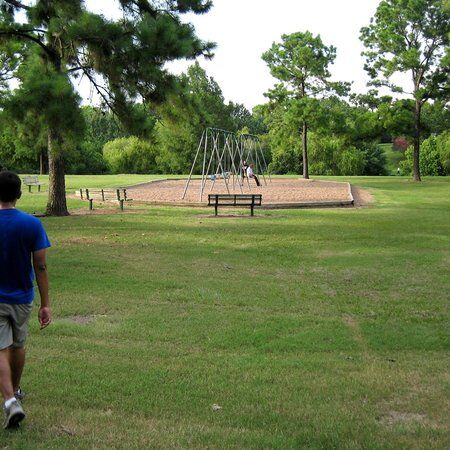
Events and Festivals
The park’s location within Houston's greenbelt, stretching from Shepherd Drive on the west to Bagby Street on the east, make it an ideal venue for some of Houston’s major public events. Throughout the year, the park also hosts various concerts, food festivals, and fitness classes such as yoga sessions on the lawn.
One of the park's signature events is the annual Freedom Over Texas Fourth of July celebration. This patriotic event, typically held between 4:00 pm and 10:00 pm, features live music, food, and a spectacular fireworks display that lights up the Houston skyline.
Other events include the Free Press Summer Fest and the Houston Art Car Parade, where thousands of spectators gather to watch art cars cruising through the park. In the past, it has also been the venue for the Bob Marley Festival and the Westheimer Street Festival in Exile.

Interested in finding more places like this? Try one of our CityDays Exploration Games - untangle cryptic clues as a team, as you are taken on a journey to the most unique, unusual and bizarre corners of Houston and beyond.








